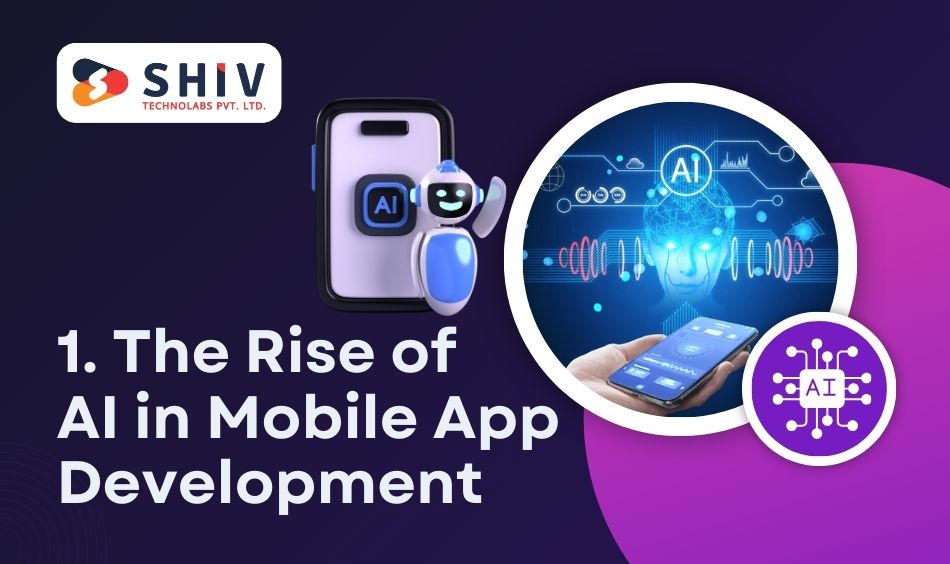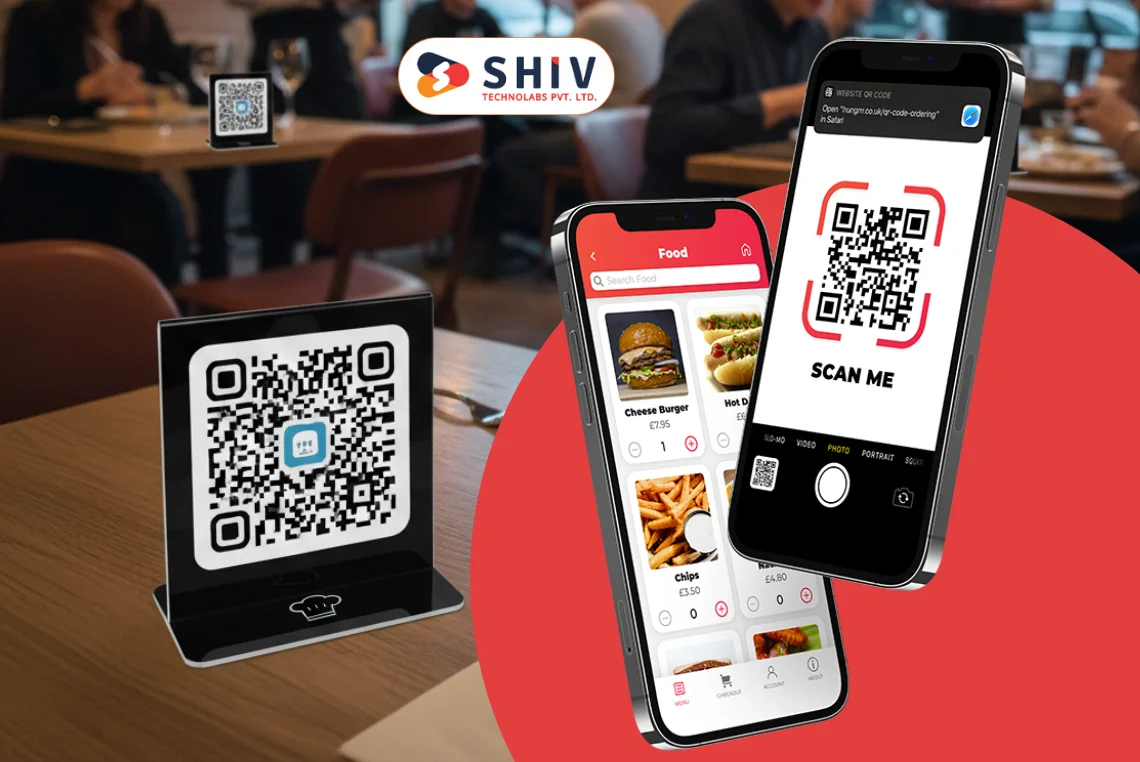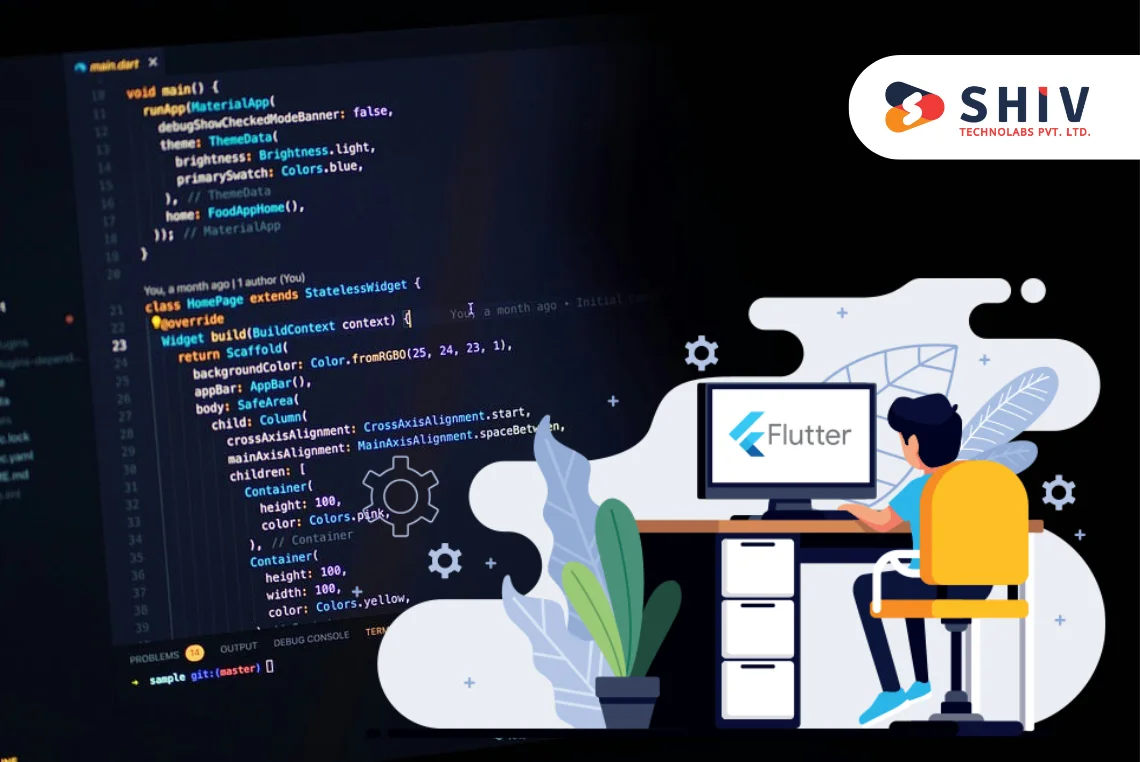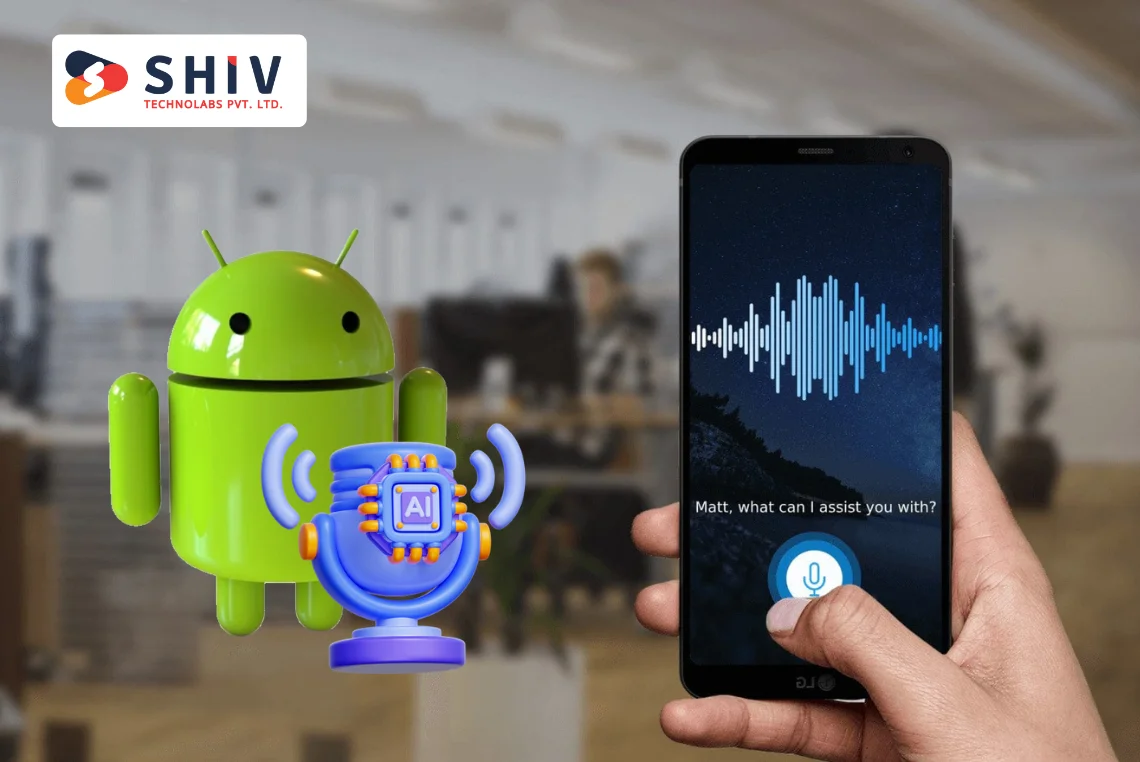Table of Contents
Mobile app development is a rapidly evolving field, and Australia is emerging as a key player in adopting and advancing new technologies. The rise of Artificial Intelligence (AI), the Internet of Things (IoT), and Augmented Reality/Virtual Reality (AR/VR) is revolutionizing how mobile applications are designed, built, and experienced. These technologies are not just tools—they are transformative forces shaping the future of digital interaction. This article delves into how AI, IoT, and AR/VR are redefining mobile app development in Australia, with a particular focus on their current applications and future possibilities.
1. The Rise of AI in Mobile App Development

Artificial Intelligence is no longer a futuristic concept; it is a driving force in modern mobile applications. AI provides the foundation for apps to “think” and “learn,” making them more adaptable and intuitive. It has shifted the paradigm from static functionality to dynamic user engagement.
# AI’s Role in Mobile Applications
AI enables features like natural language processing, image recognition, predictive analytics, and automation. These capabilities allow mobile apps to offer customized experiences, process vast amounts of data, and automate routine tasks. For example, chatbots powered by AI are now an integral part of many Australian apps, assisting users with inquiries, booking services, or troubleshooting issues without the need for human intervention.
# Applications of AI in Australia
Healthcare: In the healthcare sector, AI is being integrated into mobile apps for diagnostics and virtual consultations. These apps use AI algorithms to analyze symptoms, recommend actions, and even schedule appointments with specialists. For example, apps designed for Australian users can connect rural patients to city-based doctors for consultations, bridging the healthcare accessibility gap.
Retail and eCommerce: Retail apps are using AI to offer personalized shopping experiences. By analyzing user behavior and purchase history, these apps recommend products tailored to individual preferences. Moreover, AI-driven inventory management helps Australian retailers optimize stock levels and predict demand.
Finance: AI is significantly impacting the finance sector through mobile apps. Fraud detection, financial planning, and credit scoring are increasingly relying on AI algorithms. For instance, apps used by Australian banks can detect unusual transaction patterns and alert users instantly.
# Emerging AI Trends
AI in mobile apps is moving beyond personalization. Emerging trends include the use of generative AI for creating unique content, advanced machine learning models for more accurate predictions, and real-time sentiment analysis in customer interactions. These advancements make apps more engaging and intelligent.
2. IoT Integration in Mobile Applications
The Internet of Things connects devices to create a seamless flow of information and control. IoT has transformed mobile apps into central hubs for managing and monitoring connected devices. From smart homes to industrial machinery, IoT-enabled apps are becoming indispensable.
# The Role of IoT in Mobile Applications
IoT-enabled apps facilitate remote control and monitoring of devices, allowing users to interact with their surroundings in unprecedented ways. These apps collect and process data from various sensors, providing actionable insights and improving operational efficiency.
# IoT Applications in Australia
Smart Homes: IoT apps are at the forefront of the smart home revolution in Australia. These apps allow users to control appliances, security systems, and lighting through their smartphones. For instance, apps can automate routines like turning off lights when leaving the house or adjusting thermostats based on weather conditions.
Agriculture: Australia’s agricultural sector has embraced IoT technology for precision farming. Mobile apps connected to IoT devices monitor soil quality, crop health, and weather conditions, enabling farmers to make data-driven decisions. These solutions improve yield and reduce resource waste.
Urban Infrastructure: Smart city initiatives across Australia are leveraging IoT apps to improve public services. For example, apps can monitor traffic patterns, manage energy usage, and even track waste collection schedules.
# Future of IoT in Mobile Apps
The adoption of 5G technology is expected to accelerate IoT integration in mobile apps. With faster communication speeds and lower latency, apps will handle real-time data more efficiently. This advancement will enable industries like manufacturing, healthcare, and transportation to adopt IoT solutions on a larger scale.
3. AR/VR: Revolutionizing User Experiences

Augmented Reality (AR) and Virtual Reality (VR) are revolutionizing the way people interact with mobile applications. These technologies enhance user engagement by providing immersive and interactive experiences that go beyond traditional interfaces.
# Understanding AR/VR in Mobile Apps
AR overlays digital content onto the real world, while VR creates fully immersive virtual environments. These technologies are being used in mobile apps for education, entertainment, retail, and more. By blending physical and virtual realities, AR/VR offers a level of engagement that is hard to match.
# Key AR/VR Applications in Australia
Gaming: The gaming industry has been one of the earliest adopters of AR/VR technologies. Australian gamers are familiar with apps that turn everyday environments into game arenas. Titles like Pokémon Go have showcased the potential of AR in creating highly engaging games.
Retail: Retailers in Australia are adopting AR to provide customers with innovative shopping experiences. Apps allow users to visualize how furniture would look in their homes or try on clothes virtually before purchasing them. These features reduce return rates and improve customer satisfaction.
Real Estate: Virtual reality is transforming the real estate sector. Apps equipped with VR capabilities enable users to take virtual tours of properties, saving time and effort. This feature is particularly beneficial in Australia’s competitive housing market, where buyers and renters often face high demand and limited time for physical visits.
# Future Prospects of AR/VR
The integration of AR glasses and VR headsets with mobile apps is on the horizon. These devices will offer more immersive experiences, making AR/VR technologies accessible for both consumers and businesses. Additionally, AR/VR in education and training apps is expected to grow, providing interactive learning experiences.
4. Interaction Between AI, IoT, and AR/VR
These three technologies do not exist in isolation. Their integration can lead to groundbreaking innovations in mobile app development. For example, an IoT-enabled app can use AI to predict maintenance needs for smart devices, while AR can offer a visual interface for repairs.
# Examples of Combined Applications
Smart home apps can integrate AI to learn user preferences and IoT for device control, while AR provides a visual representation of energy usage or device health.
In healthcare, IoT devices can monitor patient vitals, AI can analyze the data for patterns, and AR can guide caregivers with real-time overlays during emergencies.
5. Challenges in Adopting These Technologies
The integration of AI, IoT, and AR/VR in mobile applications offers exciting opportunities, but it also comes with its fair share of challenges. These obstacles can impact the speed of adoption, the quality of the final product, and overall user satisfaction. Understanding and addressing these hurdles is essential for businesses and developers in Australia.
# Technical Limitations
One of the primary challenges lies in the complexity of implementing these advanced technologies. AI requires a robust understanding of data science, machine learning models, and algorithm development. Many developers face difficulties in training AI systems due to insufficient data or limited expertise in the field.
Similarly, IoT integration demands a seamless connection between devices and networks. Ensuring compatibility between different IoT devices can be a daunting task, especially with the variety of protocols and standards available in the market. This complexity increases for developers targeting industrial or enterprise-level applications where multiple devices and platforms need to work in unison.
In the case of AR/VR, performance optimization is critical. These technologies require significant processing power and advanced graphical capabilities, which can strain mobile devices. Achieving a smooth user experience while maintaining app efficiency poses a challenge, particularly for resource-constrained devices.
# Regulatory and Security Concerns
The use of AI and IoT often involves handling sensitive user data. Protecting this data from breaches or unauthorized access is crucial. Australian businesses must comply with data privacy laws such as the Australian Privacy Act, which imposes strict requirements for collecting, storing, and sharing personal information.
IoT-connected devices also face unique security risks. Vulnerabilities in one device can expose an entire network to potential attacks. Developers need to focus on building secure systems that protect both devices and the data transmitted between them.
For AR/VR applications, user safety in virtual environments is an emerging concern. Apps that simulate physical interactions must account for potential risks to avoid harm or discomfort to users.
# High Costs of Development
Developing mobile apps with AI, IoT, or AR/VR technologies often involves a significant financial investment. The costs of hiring skilled developers, purchasing necessary hardware, and maintaining advanced infrastructure can be prohibitive, especially for startups and small businesses. While these technologies offer long-term value, the initial investment remains a barrier for many.
# User Adoption and Accessibility
Introducing cutting-edge technologies in mobile apps also requires educating users about their benefits and functionalities. Some users may hesitate to adopt new tools due to unfamiliarity or concerns about complexity. Additionally, not all users have access to the latest devices or fast internet connections required to fully experience IoT or AR/VR applications. Bridging this gap between technology and user accessibility is an ongoing challenge.
6. Role of Australian Businesses in Driving Innovation
Businesses in Australia are uniquely positioned to lead the charge in adopting and advancing these technologies. By taking strategic steps, they can not only overcome the challenges mentioned above but also set benchmarks for the global market.
# Startups and Small Businesses
Startups play a crucial role in innovation by addressing niche problems with creative solutions. In the context of AI, IoT, and AR/VR, smaller businesses can focus on specific applications that cater to underserved markets. For example, a startup could develop an IoT app for monitoring energy consumption in small offices or an AR app designed for virtual tourism within Australia.
Collaborating with local universities and research institutions can provide startups with access to the expertise and resources needed to build advanced solutions. Government grants and funding initiatives further enable small businesses to take bold steps in adopting these technologies.
# Large Enterprises
Corporations have the resources to invest in large-scale projects involving AI, IoT, and AR/VR. These businesses can focus on developing applications that cater to wider audiences and industries. For instance, an enterprise-level company could create an IoT platform that connects various industries, from agriculture to healthcare, under one ecosystem.
Additionally, large enterprises can set up dedicated research and development teams to experiment with new ideas and refine their products before launching them to the market. Their ability to scale production and marketing efforts helps in promoting broader adoption of these technologies.
# Collaborations and Partnerships
Collaboration between businesses, governments, and technology providers can accelerate the adoption of AI, IoT, and AR/VR in Australia. Partnerships with tech companies offering specialized expertise can help Australian businesses stay ahead in integrating these technologies into their mobile applications.
7. Future Trends to Watch
As AI, IoT, and AR/VR technologies continue to evolve, several trends are likely to shape the future of mobile app development in Australia.
# AI-Powered Decision-Making
Mobile apps will increasingly use AI to provide predictive insights and real-time decision-making capabilities. For instance, an AI-driven fitness app could analyze a user’s daily activities and suggest personalized exercise routines based on their habits and goals. Businesses will also benefit from AI by gaining access to better analytics and forecasting tools embedded in their applications.
# Expansion of IoT Ecosystems
The IoT landscape is expanding, with more devices becoming interconnected. This growth will lead to mobile apps serving as central hubs for managing entire ecosystems, from smart homes to industrial automation systems. For example, an IoT app for urban planning could integrate data from traffic sensors, public transport systems, and energy grids to optimize city operations.
# Advancements in AR/VR Devices
AR and VR technologies are evolving rapidly, with hardware becoming more affordable and accessible. AR glasses and VR headsets are expected to become commonplace, creating new opportunities for mobile app development. These devices will allow users to interact with their surroundings in more immersive ways, whether shopping for furniture, attending virtual events, or learning new skills.
# Integration Across Industries
AI, IoT, and AR/VR are no longer confined to specific sectors. Their integration across multiple industries will unlock new possibilities. For instance, in education, AR and VR apps can provide interactive lessons, while AI-powered tutors offer personalized support. In healthcare, IoT devices can monitor patients remotely, with AI analyzing the data and AR providing visual guides for caregivers.
# Focus on Sustainable Development
As environmental concerns grow, mobile apps incorporating IoT and AI will prioritize sustainability. For example, apps could help users track their carbon footprint or optimize resource usage in smart homes. Businesses that align their products with sustainable practices are likely to gain an edge in the market.
Moving Toward a New Era
The future of mobile app development in Australia is bright, driven by the innovations offered by AI, IoT, and AR/VR. These technologies have the potential to redefine industries, create new opportunities, and transform user experiences. By addressing challenges, investing in talent, and staying updated with emerging trends, Australian businesses can play a pivotal role in shaping this new era.
From smarter cities to more interactive entertainment, the possibilities are vast. As technology evolves, the line between the digital and physical worlds will continue to blur, making mobile applications an even more integral part of daily life.
At Shiv Technolabs, we take pride in being a leading mobile app development company, delivering cutting-edge solutions tailored to your business needs. Our mobile app development services in Australia focus on creating innovative, user-friendly, and future-ready applications that drive success. Partner with us to bring your ideas to life and stay ahead in the evolving digital landscape.




















